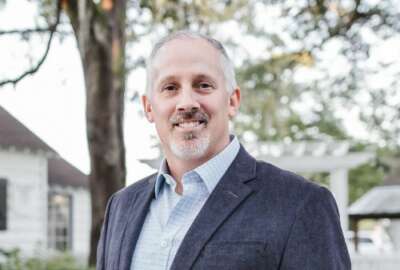The National Guard has the highest suicide rate in the total force at 30.6 per 100,000 people. Last year the Guard implemented 11 pilot programs to help service members in need, and now the first reports from those programs are coming back.
At this point, the Guard plans on renewing all 11 of its 2019 pilot programs taking part in the Warrior Resilience and Fitness Innovation Incubator (WRFII) — a hub that aims to identify, select, evaluate, and disseminate evidence-based practices to prevent harm and promote resilience.
The incubator will also fund 25 new pilot programs for 2020. The Guard is currently taking proposals from the individual states on pilot program ideas. An expert review panel will decide which ones get funding.
“WRFII allows us to take our efforts that support the 54 states and territories in this very complicated and difficult space and really concentrate on the things the states can implement,” Maj. Gen. Dawne Deskins, National Guard director for manpower and personnel, told reporters at the Pentagon Thursday. “The programs address the state’s unique challenges. Standing up WRFII was a significant event.”
Public Health Service Capt. Matt Kleiman, director of the National Guard’s warrior resilience and fitness division, said WRFII offers a strategic approach to take all the practices used by each state and offer them to all the National Guards.
The pilots are taking place in Massachusetts, Connecticut, Ohio, New Mexico, South Dakota, Montana, South Carolina, Georgia and California, with some states hosting multiple pilots.
The pilots fit into a larger approach by the National Guard to provide an evidence-based and data-driven foundation to identify risk factors and create effective interventions.
“The 11 pilots were methodically chosen and represent what we thought were the best proposals and the best ideas of what could be happening to inform what right looks like,” Kleiman said. “The pilots are all at different stages. I can’t say if they’ve been successful or not successful, but I can say we are learning.”
Work Warriors for Georgia, for instance, identifies service members who are unemployed and helps them search for jobs, build a resume and practice interviews. So far, the program has screened more than 6,000 service members, assisted 1,550 and secured employment for 134.
The Massachusetts Army Warrior Fit program helps service members meet physical readiness standards, optimize performance and live a healthy lifestyle. The program has in-person training, assessments and an online learning portal. Since September, the program gave performance improvement plans to 140 service members, held two events and enrolled 800 service members in its online resource portal.
“The New Mexico Behavioral Health Primary Prevention and Retention Program looks at recruits who are just coming in to the National Guard and providing screening on adverse behavioral health outcomes within that population,” Kleiman said. “We want to know if someone is coming into the National Guard with a history of problems that could impact their ability to be as resilient as they need to be to do the mission.”
That means identifying risk factors like previous abuse and putting them through proactive case management. Since April, the program screened 173 recruits and began proactive case management for 116 at-risk service members.
Screening is something suicide prevention advocates have supported in the past.
“A lot of young men and women are exposed trauma or alcoholism or abuse in their youth and enter military service,” Chris Ford, CEO of Stop Soldier Suicide told Federal News Network last October when the Defense Department’s most recent suicide report came out. “We need to do a better job at the recruitment or onboarding phase of screening those new recruits for adverse childhood experiences, and then helping them cope with those through treatment modalities while in service. That’s going to make them more resilient to deal with things they may have joined the military to get away from. It’s going to create a stronger force.”
Another program in South Dakota helps train service members how to respond to anyone who discloses a sexual assault. Last December, the program held its first training session with six participants.
Copyright
© 2024 Federal News Network. All rights reserved. This website is not intended for users located within the European Economic Area.

